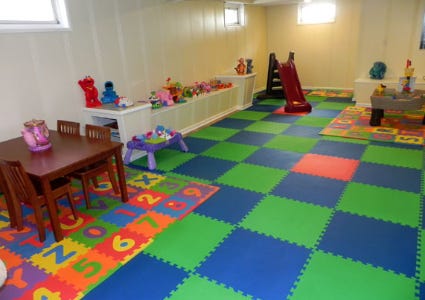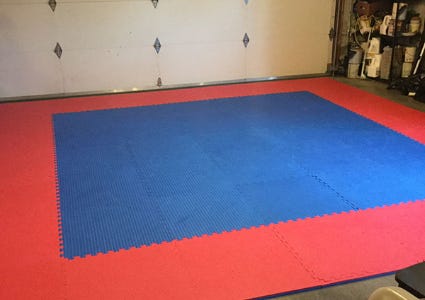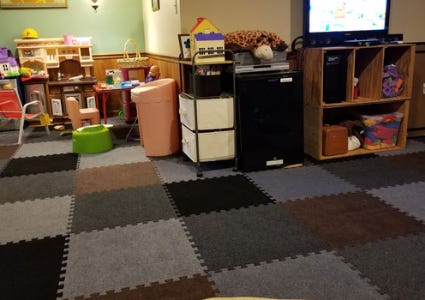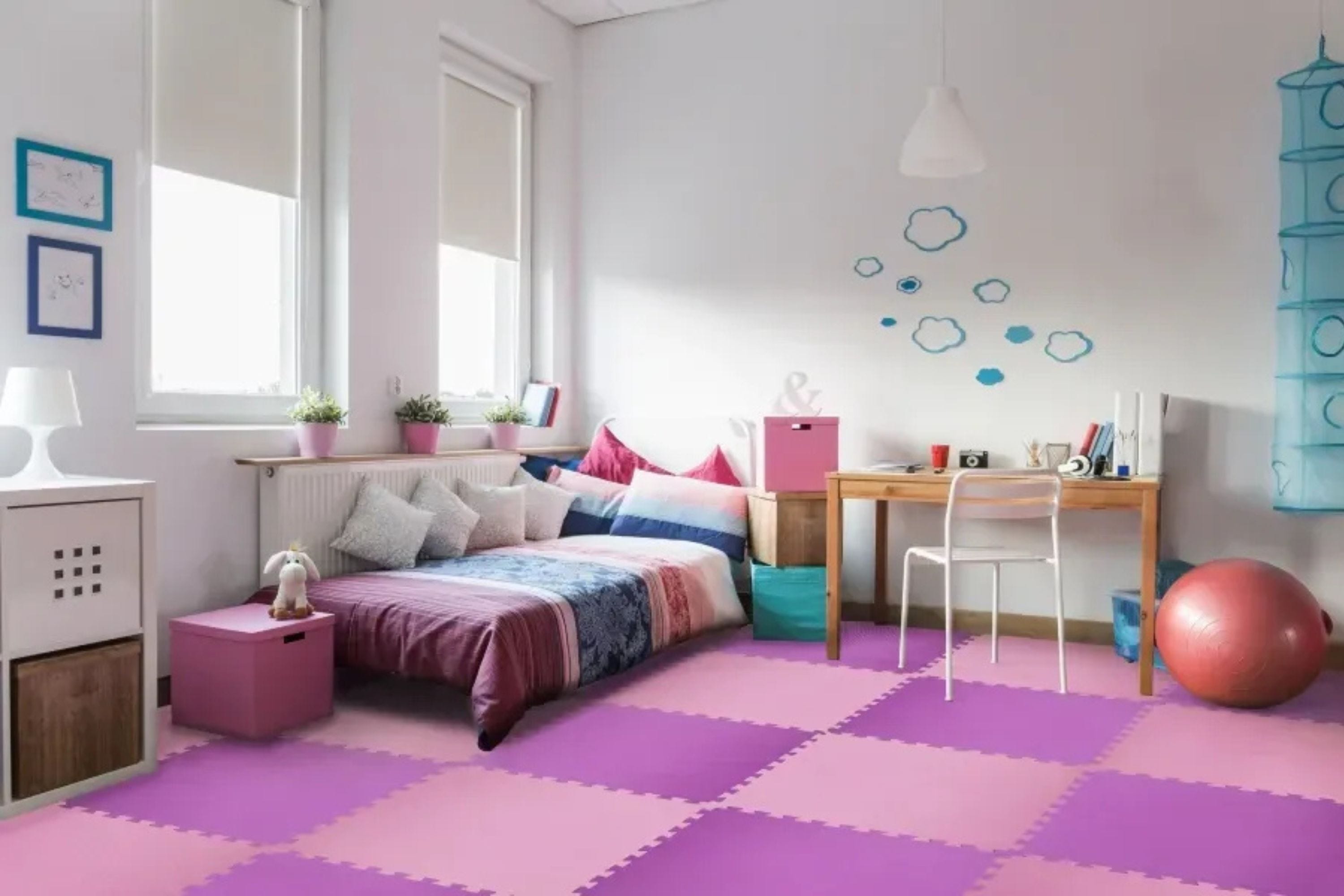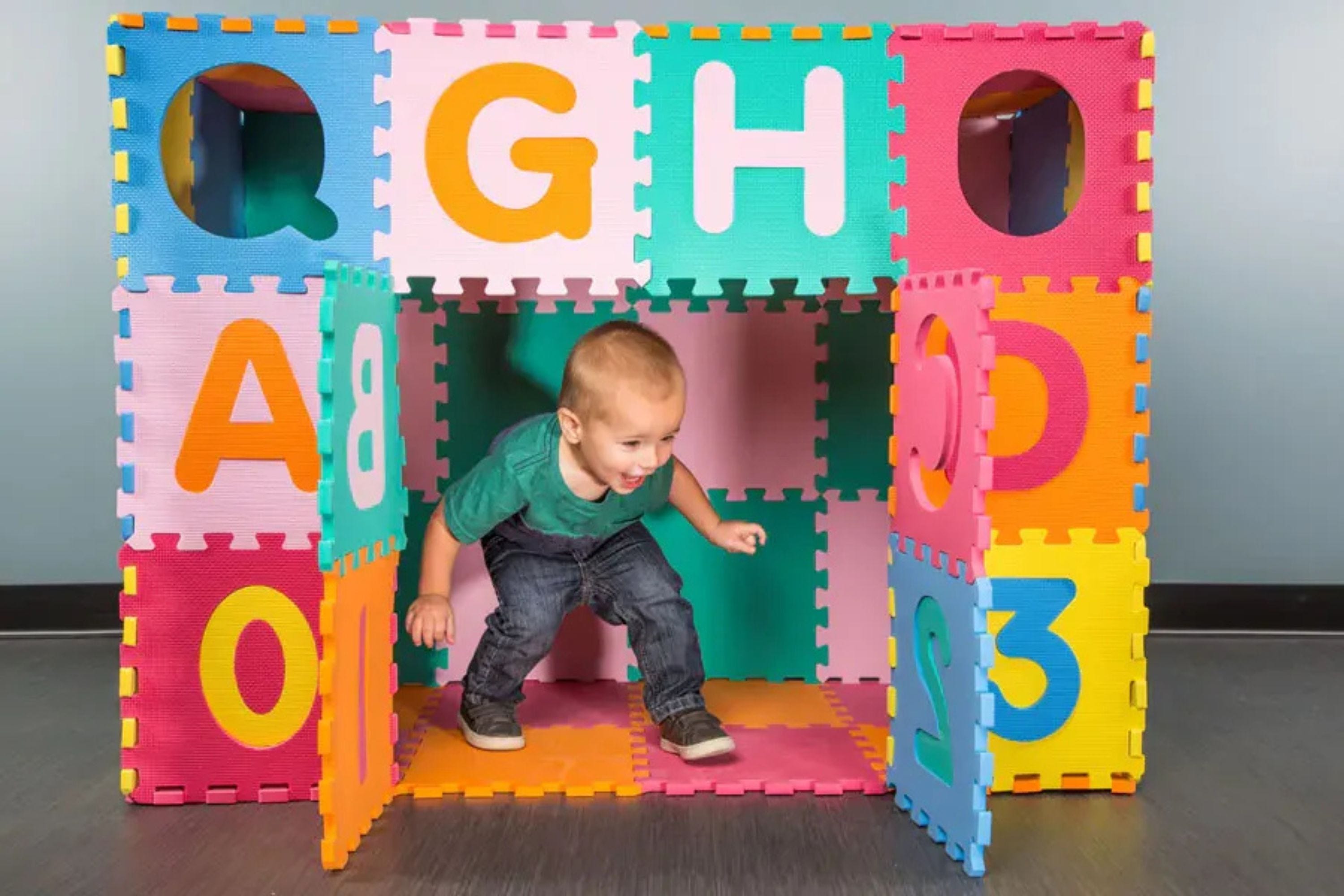


Customer Favorite Foam Tiles
About Interlocking Foam Tiles
Colorful, versatile, and cushiony – soft foam tiles are incredibly popular flooring for everything from playrooms to home gyms, basements, and more. Not only are they some of the most affordable and DIY-friendly interlocking floor tiles on the market, but they’re also pretty durable, too.
So no matter why you need some soft, resilient flooring, you’re sure to find some foam tiles that can transform your space without breaking the bank.
Types of Foam Flooring
Foam Floor Tiles
Interlocking foam tiles are the perfect flooring for any space where you need a soft, resilient surface. Whether you plan to be working out or standing on your feet for extended periods, the closed-cell EVA foam material will support your step.
While foam tiles are popular as temporary flooring, they also work great in more permanent situations. You can always secure them with double-sided tape for extra stability if you want a long-term installation.
Foam Floor Mats
Foam mats are made from interlocking tiles and are often pre-sized because they’re made into Alphabet foam mats or number mats. They are perfect for playrooms and learning centers, but you probably don’t want them in your home gym.
The great thing about foam tiles is that any of them can be made into floor mats with edge pieces if you don’t want full wall-to-wall foam flooring.
Foam Tile Surfaces
Some foam tiles are purely made of foam, but others come with different surface materials that might benefit you, depending on how you plan to use the flooring. It might be that just foam is enough for you, but it’s a good idea to explore your options before deciding.
Foam
Typically foam tiles are made purely from closed-cell EVA foam, and that’s it. They are water-resistant, and also resist mold and mildew. However, even durable foam can be susceptible to punctures from sharp objects like animal nails or high heels.
Rubber
If you want foam tile gym flooring, consider an option with a rubber top. Rubber-topped foam tiles have all the traits of regular foam, with the additional benefits of a rubber surface. They’re slip-resistant, even when wet, and even more durable than foam.
Perfect for high-impact workouts and plyometrics, rubber-topped foam tiles are much lighter than solid rubber tiles, too. Please note: If you plan to use heavy weights or heavy gym equipment, these tiles are not recommended, since the foam can compress.
Polyester and Nylon
Carpet-topped tiles often used polyester or nylon carpet fibers for the surface because they are both soft and durable. The carpeting on top adds some comfort to each step and is also durable enough to handle considerable traffic.
If you’re looking for quality, professional-looking trade show flooring, a carpeted foam tile is the ideal solution. They’re lightweight and portable, and easy to quickly install. Many people also choose foam-backed carpet tiles for basements, because they provide a comfortable surface, and they can also be pulled up in the event of a flood.
Where To Use Soft Foam Flooring
Foam tiles are versatile enough to be used in a wide range of applications, both inside and outside. Discover the possibilities for how you can use soft foam flooring.
Indoor Applications
✅ Home gyms: Soft foam tiles are an excellent choice for first-time gym flooring buyers who might not be sure if working out at home is right for them. They’re not a huge investment, the soft tiles are perfect for lightweight exercises. If you plan for heavy Olympic weightlifting or more demanding workouts, the basic soft tiles are not for you.
✅ Martial arts: Foam flooring is the most common flooring option for martial arts studios and at-home practice. Everything from traditional Martial Arts, Mixed Martial Arts, Tatami, and more can be safely performed on our foam mats. Foam tiles are thick, durable, shock-absorbent, insulating, and mold- and mildew-resistant, creating the ideal practice surface.
✅ Playrooms: Soft foam flooring is perfect for kids of all ages. The soft, cushiony foam protects your little ones while they learn to walk, run, jump, and play. Soft foam flooring also gives you the opportunity to crawl around and enjoy active play with your kiddos on a soft, warm, insulated surface.
✅ Trade shows: Lightweight, easy to install, and stylish, soft wood-look foam tiles are your best friend for trade shows. The EVA foam supports you if you’re on your feet for hours. Waterproof, allergen, and latex-free, these soft tiles can meet all your needs without weighing you down. Foam carpet tiles are also a good option.
Outdoor Applications
Looking for some soft and resilient flooring to install around your pool? Rubber-topped foam tiles might be exactly what you need. With rubber tops that provide slip-resistance even when wet, foam tiles provide a safe surface where you can lounge and play in the summer.
Foam Tile Reviews
“We just recently purchased these rubber tiles and they are perfect for my daughter’s playroom! Everyone is loving the new room! Thanks a lot!”
- Katie X. from Mineola, NY
“We ordered these during quarantine to continue practicing Soo Bahk Do in our garage. They offer both stability in stances and cushion for throws or ground sparring. They are well made and have held up to daily practice as well as a lot of rainy day play from our kids. They are easy to set up and easy to clean. Great product! We added more tiles after our first order because we liked them so much.”
- Keith M. from Oak Harbor, WA
“After my basement flooded during a storm, I was on a tight budget to find new flooring that was waterproof, easy to install, and easy to pick up/clean/dry/replace in the event of future flooding. This product seemed the best all-around, especially for its price, and boy are we glad we went with this. It is just thick enough to give some spring underfoot, without making it hard to work with.”
- Happy Customer from Kansas City, MO
Other Helpful Foam Tiles Content
Foam tiles are soft, cushiony, and perfect for play or workouts. Learn how to install foam tiles with 4 easy steps, and start enjoying your new foam floor today!
Any time I order something from the internet, my biggest concern is installation. The installation takes minutes, and it's truly so easy that, other than the cutting part, a toddler could do it! In case you've still got concerns, we've provided a step by step instructional video so you can follow along.
How to Build a Fort with Foam Tiles
Do you remember building a fort as a kid? My friends and I would move around all the furniture and use blankets and sheets to create our own secret hiding place.
Get creative with your kiddos without any extra toys. Learn how to build a fort with foam tiles in these 6 easy steps.






